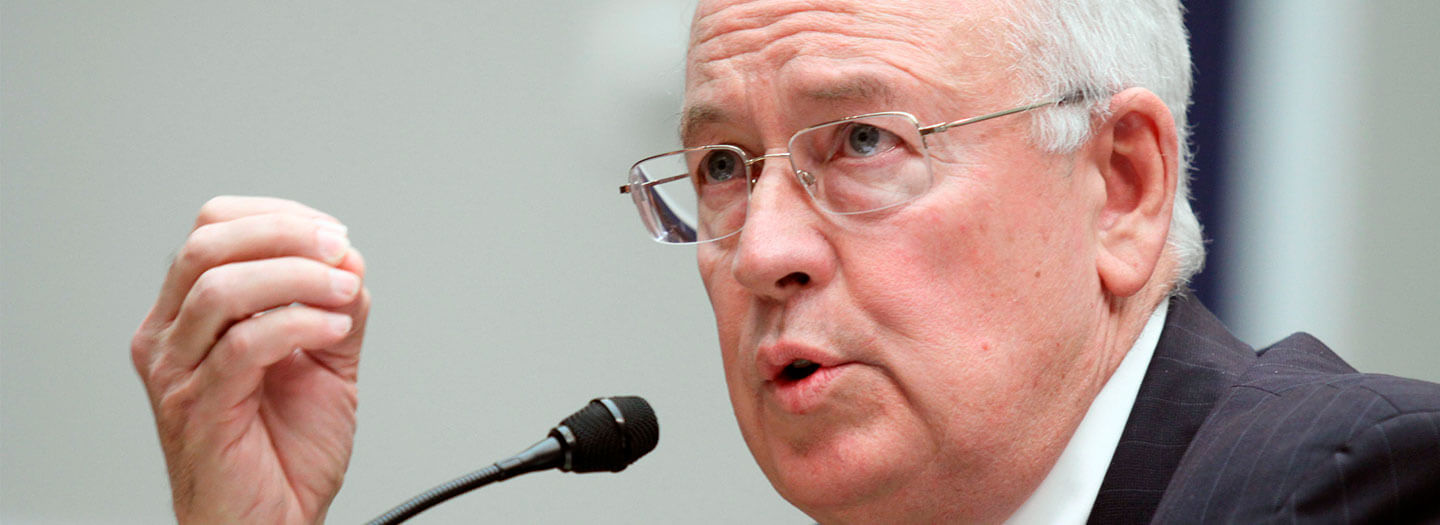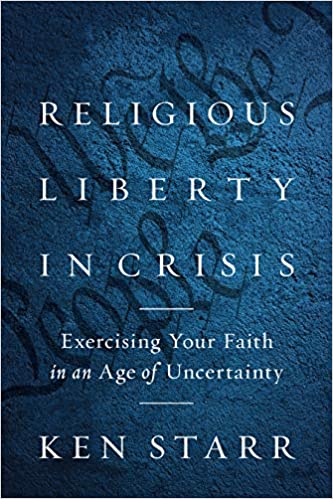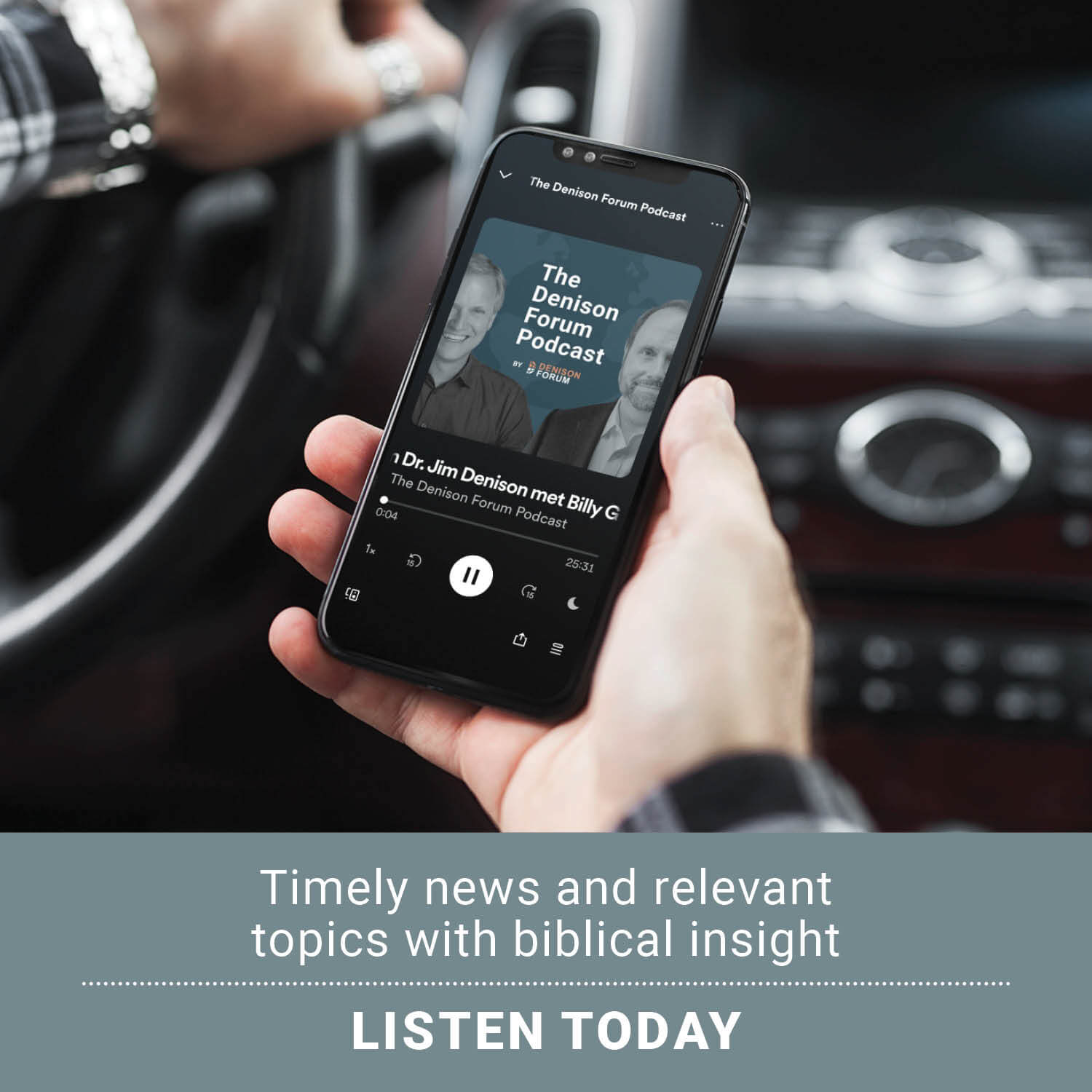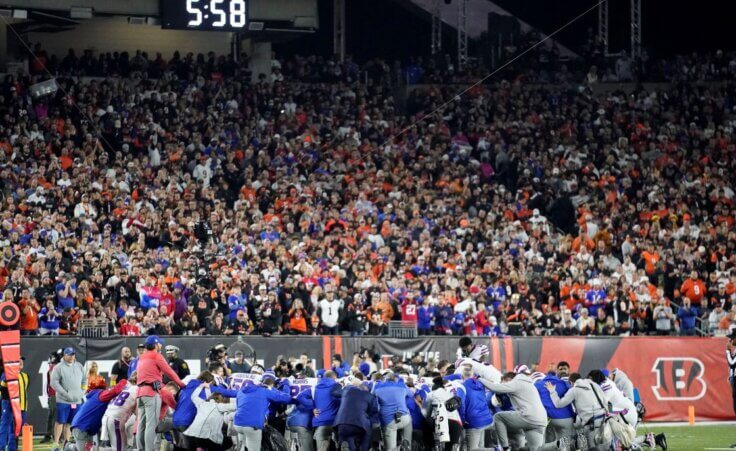
FILE - In this May 8, 2014, file photo, then Baylor University President Ken Starr testifies at the House Committee on Education and Workforce on college athletes forming unions in Washington. (AP Photo/Lauren Victoria Burke, File)
Judge Ken Starr is well-known to Americans. His legal career has been remarkable: he clerked for Chief Justice Warren Burger of the Supreme Court of the United States, served as a US circuit judge and solicitor general of the United States, argued thirty-six cases before the US Supreme Court, and served as dean of the Pepperdine University School of Law.
He served as independent counsel for the Whitewater investigation that led to President Clinton’s impeachment and served as president and chancellor of Baylor University as well.
Judge Starr has become a personal friend. I am grateful for his faith and his desire to advance God’s kingdom through his calling.
His new book is an example of this commitment. Religious Liberty in Crisis: Exercising Your Faith in an Age of Uncertainty (New York: Encounter Books, 2021) is the best guide to the urgent topic of religious freedom I have ever read. It is authoritative, winsome, and eminently readable and practical. It gives Christians an indispensable introduction to the issues, history, and challenges we face in defending and utilizing our religious liberties in these perilous days for Christian faith and witness.
Celebrating the Great Principles
Judge Starr gives us an overview of crucial Supreme Court rulings on issues related to religious freedom across our nation’s history. He also introduces us to the role of Congress and the presidency in this context. He explains necessary terms and concepts, arming us to understand our essential rights as Christians and calling us to defend and advance them with clarity and purpose.
At the heart of his presentation is what he calls the “Great Principles” that undergird American democracy: autonomy, the accommodation of religious belief and practice, freedom of conscience, and equality.
Autonomy
He begins with autonomy, the right of churches and others to govern their own affairs. He calls this “the very bedrock guaranty of religious liberty” and “a fundamental guaranty for any free individual or institution, especially churches.” He notes that commitment to autonomy “allows the faithful to freely exercise the tenets of their religion without fear of governmental interference, or of discrimination—a founding principle of our constitutional order.”
Of course, there are exceptions to this rule, as when religious rites threaten participants’ lives or health. A more recent example relates to the First Amendment “right of the people to assemble” when restrictions on gatherings were enacted by government officials during the coronavirus pandemic.
Apart from these examples, however, Starr writes that “the First Amendment does not so much create a ‘wall of separation’ between the church and the state, but rather a ‘wall of protection’ so that faith communities can freely chart their own course without disrupting significant public interests.”
He states, “Absent compelling reasons, the government cannot pass laws that target religious institutions in discriminatory ways; and governmental entities cannot interfere with religious institutions, including church schools, in ways that compromise their autonomy to express their beliefs and carry out their faith vision.”
He therefore notes, “The prospects for continuing protection of religious liberty are actually quite good. Still, if we are to maintain our religious freedoms in America, we must be willing to stand up against laws and regulations that threaten to compromise their autonomy.”
Accommodation
The Great Principle of accommodation means that the law must accommodate culturally accepted practices. History and tradition, taken together, form a vital method of interpreting the Constitution.
This principle explains why the Supreme Court allowed the Bladensburg Memorial Cross (dedicated by a local town to community members who fought and died in World War I) to stand. For the same reason, prayers in public gatherings and taxpayer-paid chaplains have been ruled not to violate the First Amendment’s prohibition of laws establishing religion (the “establishment clause”).
Chaplains, for example, were championed by James Madison, the primary architect of the Bill of Rights. The Supreme Court interpreted the establishment clause as actively promoting, not just permitting, the idea that long-standing cultural practices could remain in place.
The principle of accommodation has led to the “separation of powers” concept, presidential executive privilege, and the president’s power to take retaliatory military actions—none of which are specifically defined or granted in the US Constitution.
The principle also applies to new practices, such as introducing prayers at city council meetings, if they are consistent with longstanding practice and are not deemed to be coercive or exclusionary of others.
Freedom of conscience
In its 1943 ruling in West Virginia State Board of Education v. Barnette, the Supreme Court found that Jehovah’s Witnesses schoolchildren could not be compelled to salute and pledge allegiance to the American flag. Starr calls this “one of the most hallowed decisions in American constitutional law.” He therefore states, “We are not a coercive nation in matters of belief. We are a nation of free belief expressed in lawful action.”
In its 1972 ruling in Wisconsin v. Yoder, the Court gave the Amish right to homeschooling precedence over the state’s compelling interest in educating its citizenry. Notably, it found that a claim to religious protection must be “rooted in a religious belief.”
Starr notes: “Religion is not just special; it is of extraordinary constitutional importance. As with freedom of speech and the press, it is identified specifically with the First Amendment as worthy of protection.”
If Americans are granted such religious protection, what about prayer in public schools?
In Engel v. Vitale, decided in 1962, the Supreme Court ruled against an official morning prayer that had been produced by the State of New York. This prayer was required for recitation before the beginning of every school day (though the state allowed students to refrain from participation). It stated: “Almighty God, we acknowledge our dependence upon Thee, and we beg Thy blessings upon us, our parents, our teachers, and our Country.”
The Court banned this state-sponsored and sanctioned practice of religion, but it did not forbid prayer in public schools under any and all circumstances. Thus, Starr notes, “the opinion in this case has been wildly overread.” The problem was “the official sponsorship of prayers that aligned the government with an expression of faith.”
A second case “likewise shook the nation”: the 1963 ruling in Abington School District v. Schempp. In Abington Township, Pennsylvania, officials required that public school days begin with a Bible reading of at least ten verses without comment. Any child could be excused upon the written request of their parent or guardian. In Abington Township and many districts around the state, the Bible reading was followed by the Lord’s Prayer.
The Court ruled that, by this practice, the state officially aligned itself with one faith perspective, namely Protestant Christianity (it provided King James Version Bibles to thousands of classrooms, though student volunteers could read from another version). Catholics (who preferred the Douay version) and Jewish believers would be concerned.
The Court also found that students would inevitably feel coerced by this practice. Thus, Starr notes that it ruled “by a stunning 8–1 margin” that the Pennsylvania statute violated the establishment clause.
These rulings, however, did not mean that students cannot pray in school or that religious activities cannot be conducted on school property, a fact we will discuss next.
Equality
In its 1990 ruling in Board of Education of Westside Community Schools v. Mergens, the Supreme Court found that a Bible club has the same right of equal access on school grounds as any other club. Mergens was argued by Judge Starr, who uses the ruling to illustrate the Great Principle of equality. He calls it “a sort of constitutional golden rule” and notes, “Over the years, it’s proven to be a powerful weapon in the arsenal of religious liberty’s forces. Importantly, it promises to remain so in the years to come.”
Similarly, in its 1993 ruling in Lamb’s Chapel v. Center Moriches Union Free School District, the Court determined that if a school allowed other community groups to use its facilities, it could not discriminate against a religious group without violating its freedom of speech.
Religious freedom and its challenges
Starr illustrates brilliantly the interplay between the judicial, the legislative, and the executive with regard to religious freedom. One example is the Religious Freedom Restoration Act (RFRA), adopted overwhelmingly by Congress and signed by President Clinton in 1993. It was created in response to Employment Division v. Smith, the controversial 1990 Supreme Court ruling that was seen as limiting religious freedom.
The Religious Land Use and Institutionalized Persons Act of 2000 further clarified that government must provide accommodation for religious practices within reason, though it is not obligated to pay for such practices.
In addition, the International Religious Freedom Act of 1998, sponsored by Republican Rep. Frank Wolf of Virginia and Democratic Rep. Tony Hall of Ohio, created the position of US Ambassador-at-Large for International Religious Freedom. The ambassador is tasked with “promoting religious freedom as a core objective of US foreign policy.” The Act was adopted by Congress and signed by President Clinton.
Starr notes: “In safeguarding America’s culture of religious freedom, the Supreme Court does not stand alone. Time after time, all three branches of our federal government do their part to protect religious liberty in the United States and even beyond our shores.”
School vouchers
Starr reports that Ohio and South Carolina have adopted policies providing vouchers whereby families choosing private schools can receive governmental financial assistance. He worked on this cause, demonstrating that this program does not violate the establishment clause since students could choose non-religious schools (only 16.5 percent of Cleveland families chose religious schools).
He also notes that the student and his or her family, not the government, make the decision to attend religious schools. Just as an employee of the government can give his paycheck to a church without the government endorsing that church, so a person receiving voucher funds from the government can give them to a church school without the government endorsing that school.
Financial aid to religious institutions
Early in the coronavirus pandemic, Judge Starr was asked whether churches and denominations should receive Paycheck Protection Program (PPP) funds being made available by the government. He encouraged them to do so, reasoning that churches “reflect the confluence of two freedoms, both the free exercise clause and another fundamental liberty in a free society, the ‘freedom of association.'”
The latter is “the liberty to associate with like-minded individuals [which] is inherent in our constitutional order.” Thus, denying churches access to PPP “would be a violation of the equality principle and would “discourage freedom of association in the form of choosing employment with a religious institution.”
He cites Justice Sandra Day O’Connor’s belief that “all sorts of religious institutions could receive equal access to government programs, so long as those programs were not designed to directly promote religious activity.”
Presidential proclamations and tax breaks for churches
Starr notes that the government commonly “accommodates” religious faith and practice, as with the National Christmas Tree at the White House and Thanksgiving Day presidential proclamations going back to George Washington.
Here’s the key point: to “accommodate” the religious needs and expressions of the American people is not to “establish” them “within the meaning of the First Amendment.” This principle is embedded in the text of the Constitution itself.
For example, Article VI calls for officials to be “bound by Oath or Affirmation to support this Constitution.” This phrase accommodated Quakers who could affirm but not swear their fidelity to the new Constitution. The same extends to the presidential oath of office. Article VI clause 3 also prohibits a religious test for public office, again accommodating the religious beliefs (or lack thereof) of Americans.
Just as the government must accommodate religion, it also must not work against it. For example, tearing down the Bladensburg Memorial Cross would constitute government animus toward religion.
In its 1970 Walz v. Tax Commission decision, the Supreme Court applied “accommodation” to find that tax breaks for churches were not a violation of the establishment clause so long as they are also extended to other civic organizations providing good to the community. If the Garden Club could be tax-exempt, so could a church.
Abortion and stare decisis
Starr notes that physician-assisted suicide is currently left to the states to decide, while abortion has been made a federal civil right. He argues that this inconsistency should be resolved in favor of returning abortion debates to state and local governments and courts.
One problem with such a move is stare decisis (“it has been decided” in Latin). This doctrine has been interpreted to mean that the court should not revisit and reverse prior decisions except for the most compellingly powerful reasons.
In Starr’s view, stare decisis should be followed in building a body of jurisprudence but not in interpreting the Constitution. Laws can be overturned through process, but if the Supreme Court reads a law into the Constitution where none exists, and it is bound by stare decisis to uphold that judicially created right, it is in effect doing the work of the legislature rather than the judiciary.
Otherwise, each jurist is not permitted to keep his or her oath to interpret the Constitution in a manner that is faithful to his or her own conscience and judgment. In addition, “justices who have gone before are, in effect, ruling from the grave.”
He notes that the Supreme Court, between 1810 and 2019, overruled more than two hundred of its decisions in whole or in part. However, he reports that stare decisis is now followed by all but Justice Clarence Thomas. Starr explains why: the judges are now all career judges. They have little or no experience outside the judiciary, making “judicial timidity” the “new phenomenon.”
This fact related directly to the abortion debate in the context of Planned Parenthood v. Casey, a 1992 ruling that was unfortunately decided on a “stay the course” basis, “allowing somewhat greater state regulation of abortion while blocking its elimination as a constitutionally protected procedure.”
In Casey, the majority upheld Roe because a generation had been raised to expect the right to abortion. However, the Court previously overturned segregation laws (Brown v. Board of Education) that had even longer standing in American society. It also upheld judicial power to strike down congressional enactments or presidential actions (Marbury v. Madison) despite social pressure.
Starr adds that while stare decisis has unfortunately kept federal abortion rights in place, this posture is good for religious freedom and the Great Principles of church autonomy, freedom of conscience, accommodation of religious belief and practice, and the primacy of history and tradition over doctrine.
The urgency of the moment
Judge Starr concludes by citing numerous examples of religious organizations benefiting and advancing the common good. He reinforces the principle of equality as best for all, reminding us that the government should “do unto religious voices only as you do to secular ones.”
However, he warns that we are seeing the steady erosion today of our first freedoms: freedom of religion, freedom of speech, freedom of the press, and freedom of assembly. It is therefore vital that all Christians understand our religious freedoms and support organizations working to defend them.
His book is a gift to Christians in these perilous days. The so-called Equality Act and other legal attacks on religious freedom illustrate rising opposition to biblical morality in American culture. We can expect more attempts to brand us as dangerous to society and therefore to limit our constitutional freedoms.
I encourage all Christians and all Christian leaders to read Religious Liberty in Crisis and learn its lessons. In these days, part of “always being prepared to make a defense to anyone who asks you for a reason for the hope that is in you” (1 Peter 3:15) is “being prepared” to defend our religious freedom.
On this basis, we can share with our secularized culture the spiritual freedom found only in Christ.














